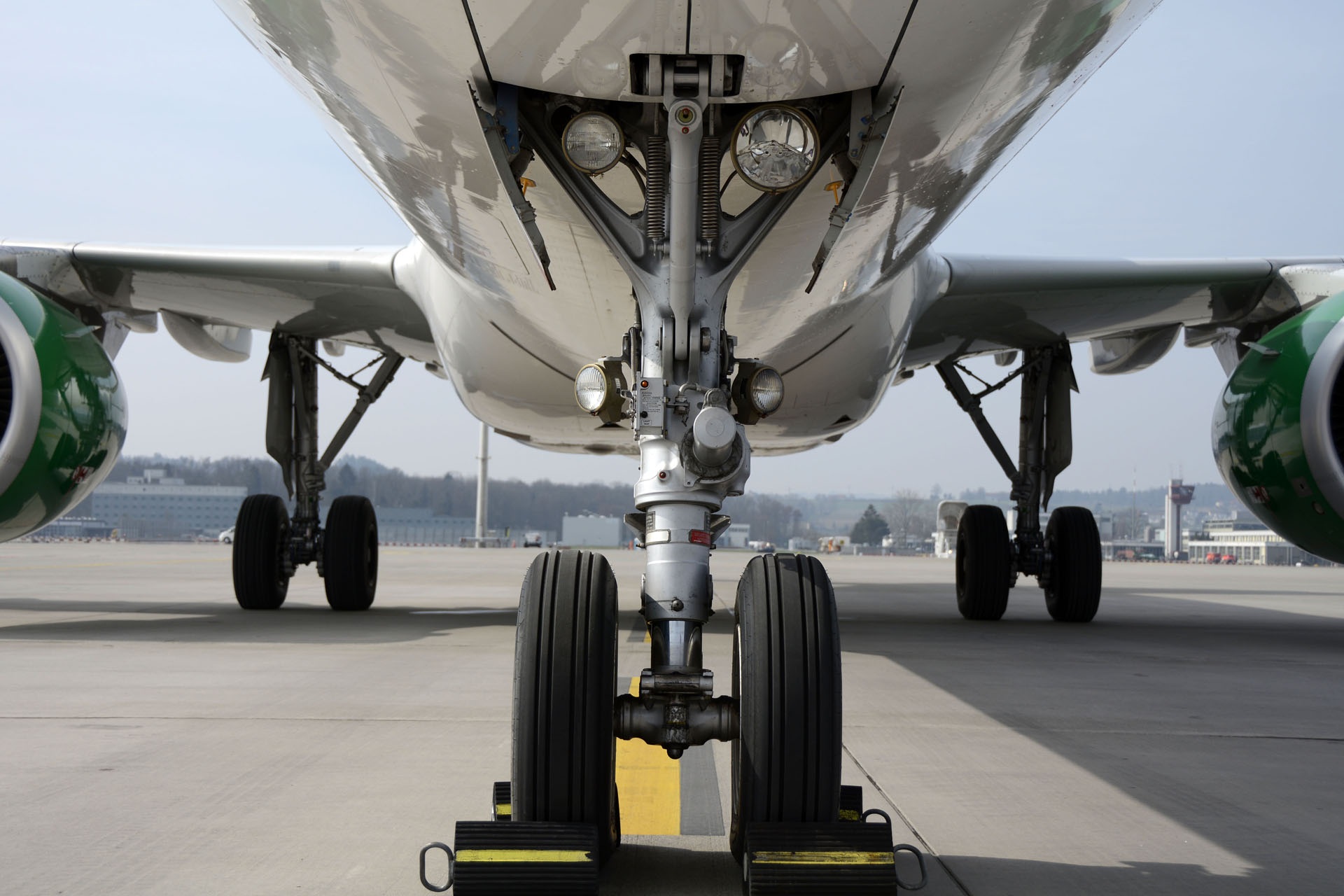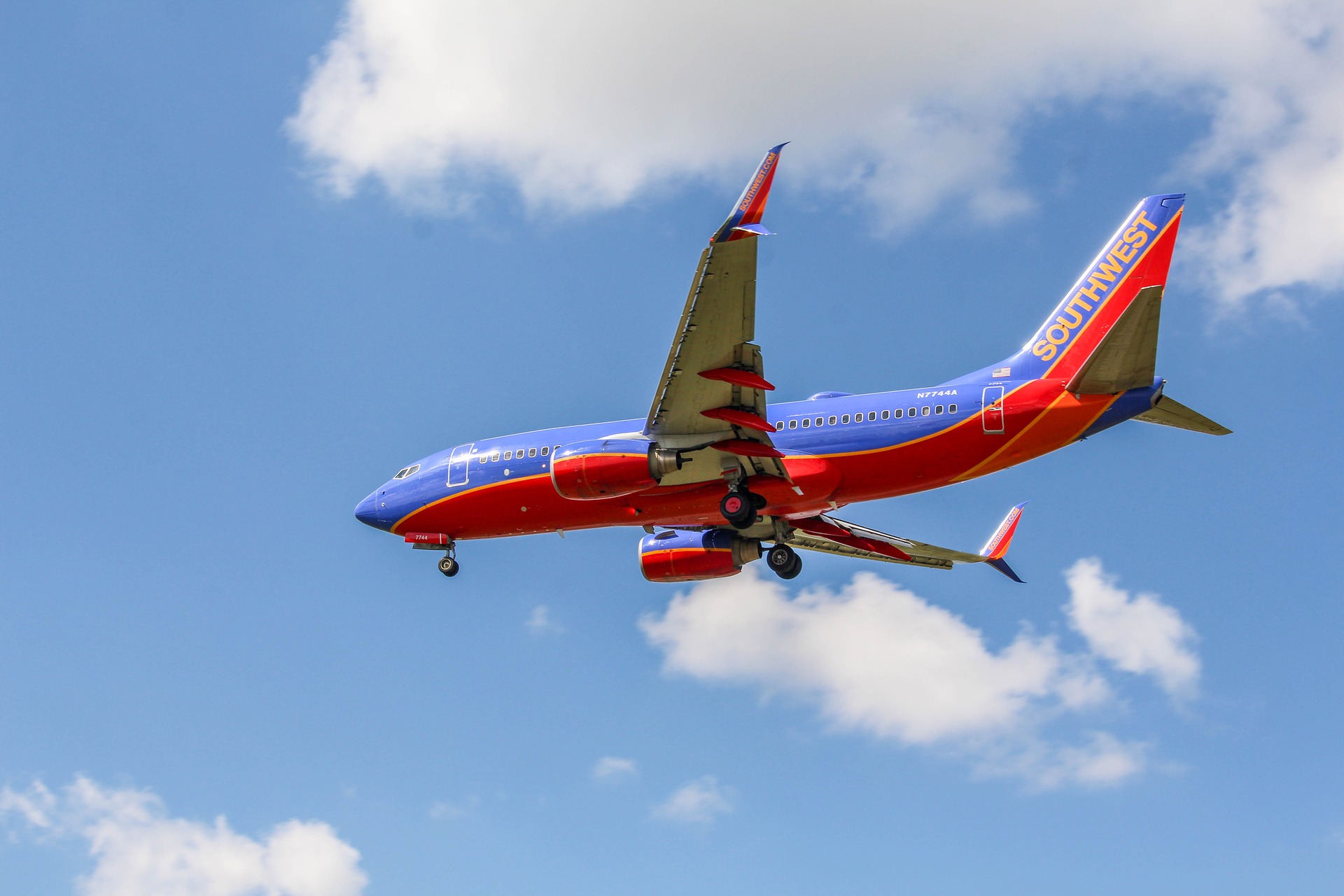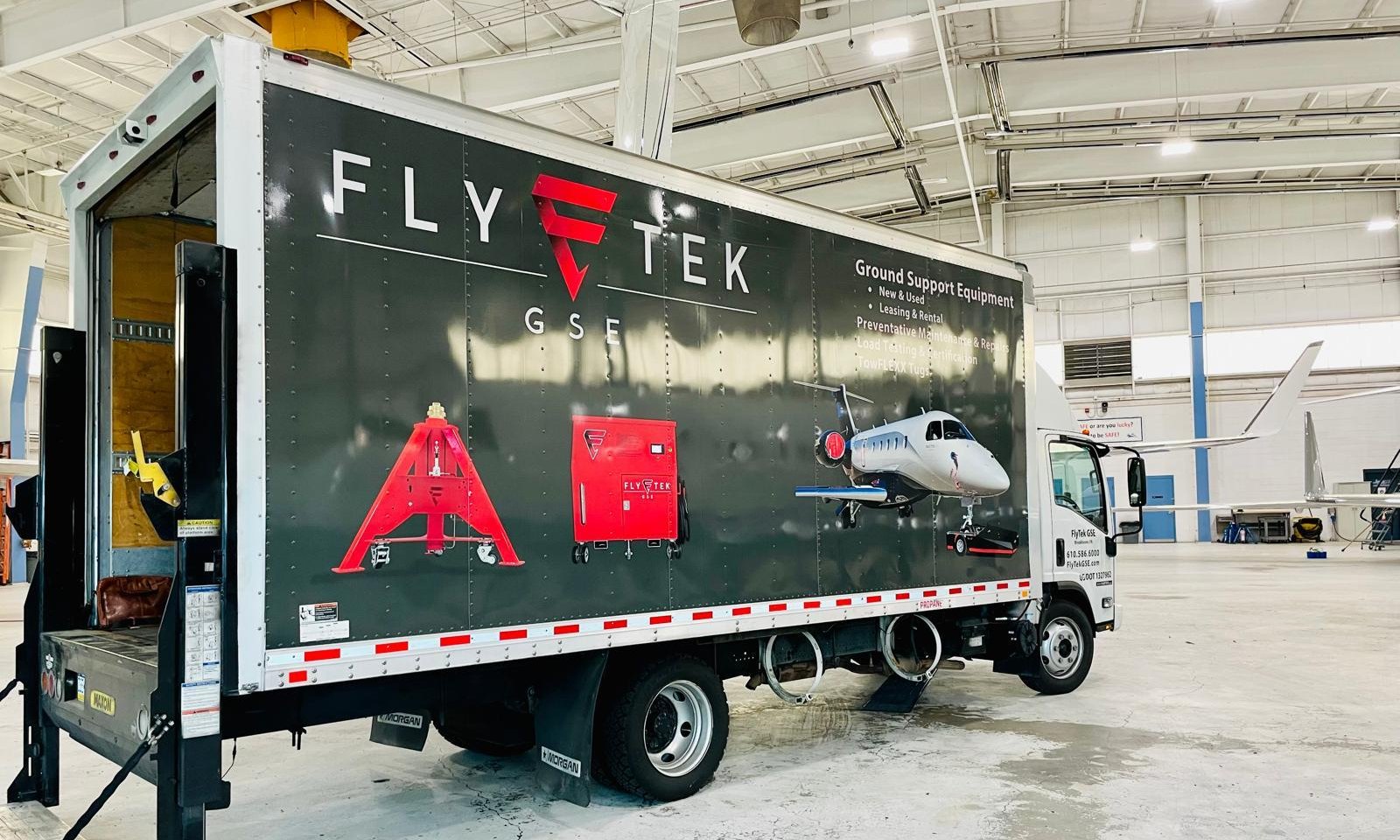Aircraft jacks are a fundamental piece of ground support equipment used when making repairs. There are four types of hydraulic aircraft jacks — bipod, tripod, quadrupod, and axle — which each have their own benefits. However, tripod and axle jacks are by far the most common. Hoisting is another option for getting aircraft off the ground, but this is not recommended due to the potential for swaying.
Tripod Aircraft Jacks

Tripod aircraft jacks are primarily used for lifting entire aircraft straight up. They have three main legs — hence the name tripod — and a hydraulic cylinder and pump assembly in the middle. These types of aircraft jacks should not be used to lift a portion of an aircraft at an incline because the lateral force can damage the cylinder. Bipod and quadrupod can be used in this way as long as the angle is not extreme — generally 6° or less.
There are two variations of tripod aircraft jacks. These are fixed and variable height jacks. A fixed height jack has legs that are a set height. Variable height jacks, however, can have extensions added or removed from the legs to change the height. Variable height jacks are useful if you plan to service aircraft of many different sizes. If all of the aircraft you service are the same, then fixed height jacks will get the job done.
Axle Aircraft Jacks

Axle aircraft jacks are a bit different in that they are not used to lift entire aircraft. Instead, these jacks are meant to lift only a certain part of the aircraft — the wheels. Reasons to use axle jacks are when maintaining or repairing the wheels, tires, brakes, or struts. For repairs on these portions of an aircraft, it is not necessary to lift the entire aircraft. You can think of these jacks as being similar to a jack you would use to change a tire on a car.
There are three variations of the axle aircraft jack. These are hand-carried, horseshoe, and outrigger. Hand-carried axle jacks are the lightest-weight of the three and have manually operated hydraulic pumps. Horseshoe axle jacks are heavier and have an arm powered by two hydraulic cylinders. Finally, outrigger axle jacks are the heaviest and have a hydraulic cylinder powered by a two-speed pump.
Aircraft Jack Labeling System
If you are unsure about which type of hydraulic aircraft jack you have — or need — the labeling system may be able to help. These labels will tell you the type of jack, how many tons it can support, the ID number of the specific jack, the variation of the type of jack, and the number of extensions it can have (if applicable). For tripod jacks the variations will be labeled as either FH or VH — fixed height or variable height. Axle jack variations will be labeled as HC, HS, or OR — hand-carried, horseshoe, or outrigger.
For example, T25-1VH4 is one such label. The T tells us this is a tripod jack and the 25 tells us the number of tons it can support. After the dash, we have the ID number (in this case 1), the variation (VH for variable height), and the number of possible extensions (4). A20-32OR would be the label on an outrigger axel jack that can support 20 tons and has an ID number of 32.
Five-Point Aircraft Jack Inspection
Regardless of which type of hydraulic aircraft jack you are using, always remember to inspect the jack before each and every use. We recommend this five-point inspection:

- Inspect the hydraulic fluid levels — low levels can cause damaging wear on the system.
- Check for bent or stressed components such as the hydraulic cylinder.
- Do the joints show signs of strain or cracking?
- What about the condition of the locknuts — are they secure?
- Are there any other missing or damaged components?
If your aircraft jack does not pass this inspection with a perfect score, do not continue to use it. Further use may cause exponentially worsen the damage to the jack, or the jack could fail, resulting in damage to the aircraft or severe injury to workers. A robust preventative maintenance program can keep your jacks in working condition longer and reduce downtime when they require repairs.
Conclusion
While there are four types of hydraulic aircraft jacks, the two main ones you will come across are tripod and axle jacks. Both of these types of jacks have multiple variations, and you can use the jack labeling system to determine which variation you are using and the weight capacity it can withstand. Finally, always remember to inspect your jacks before each use to ensure they are still in operational order.
FlyTek GSE Aircraft Jack Load Testing, Maintenance, & Repair
For all of your aircraft jack needs, FlyTek GSE is here. We rent, lease, and sell new and used ground support equipment — including aircraft jacks. And when your equipment needs to be maintained or repaired, we can help with that too. Our expert technicians can test and certify your jacks for use, keep them in working order longer, and repair them quickly so your business can get back to work. Contact FlyTek GSE today to learn more about how our ground support equipment services.



